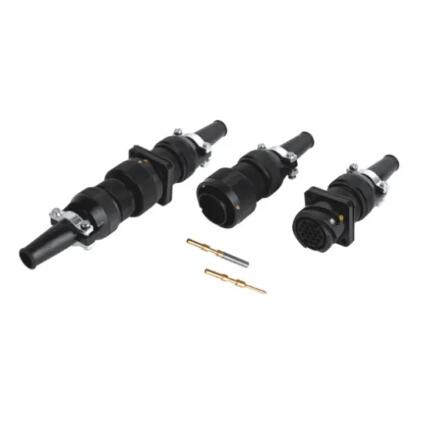Navigating the Speedscape: Key Considerations in Choosing High-Speed Sensor Connectors
2024-01-26
Introduction:
In the fast-paced world of technology, where data travels at lightning speed, the choice of high-speed sensor connectors becomes a critical decision. Selecting the right connector for a specific application involves considering a multitude of factors to ensure optimal performance and reliability. Let's explore the key considerations that guide the selection of high-speed sensor connectors for diverse applications.
1. Data Transfer Rates and Bandwidth Requirements:
The heart of any high-speed connector decision lies in understanding the data transfer requirements of the application. Consider the required data rates and bandwidth to ensure that the chosen connector can handle the volume of data generated by the sensors without signal degradation.
2. Signal Integrity and EMI/RFI Protection:
Maintaining signal integrity is paramount in high-speed applications. Choose connectors with robust shielding to protect against electromagnetic interference (EMI) and radio-frequency interference (RFI). This ensures that the transmitted signals remain clear and accurate in various environments.
3. Impedance Matching:
Impedance matching is crucial for minimizing signal reflections and optimizing signal integrity. Select connectors that offer impedance matching capabilities, ensuring a smooth flow of signals between the sensor and the electronic system.
4. Environmental Conditions:
Consider the environmental conditions in which the sensor system operates. High-speed sensor connectors must withstand factors like temperature extremes, humidity, vibration, and exposure to chemicals. Choose connectors with appropriate environmental sealing and rugged construction to ensure reliability in challenging conditions.
5. Connector Size and Form Factor:
The physical size and form factor of the connector are important considerations, especially in space-constrained applications. Ensure that the chosen connector fits within the available space and is compatible with the overall design of the system.
6. Connector Material and Durability:
The material used in the construction of the connector impacts its durability. Choose materials that can withstand the specific demands of the application. For example, connectors used in automotive or aerospace applications may require materials with high resistance to temperature fluctuations and mechanical stress.
7. Connector Termination Type:
High-speed sensor connectors come in various termination types, such as solder, crimp, or push-in. The choice depends on factors like ease of installation, serviceability, and the specific requirements of the application. Consider the expertise of the assembly personnel and the maintenance considerations when selecting the termination type.
8. Compliance with Industry Standards:
Check if the high-speed sensor connectors comply with industry standards relevant to the specific application. Compliance ensures that the connectors meet established criteria for performance, safety, and interoperability, providing confidence in their reliability.
9. Customization Options:
In some cases, standard connectors may not fully meet the unique requirements of an application. Consider whether the manufacturer offers customization options to tailor the connectors to the specific needs of the sensor system.
10. Cost Considerations:
While performance is crucial, it's also essential to consider the cost implications. Balance the performance requirements with the budget constraints of the project, ensuring that the selected high-speed sensor connectors provide the best value for the investment.
Conclusion:
Selecting high-speed sensor connectors involves a meticulous evaluation of various factors to ensure optimal performance and reliability in a specific application. By considering data transfer rates, signal integrity, environmental conditions, and other key aspects, engineers can make informed decisions that contribute to the efficiency and longevity of sensor systems in diverse industries. As technology continues to advance, the careful selection of high-speed sensor connectors will remain a crucial step in the journey of innovation and connectivity.


